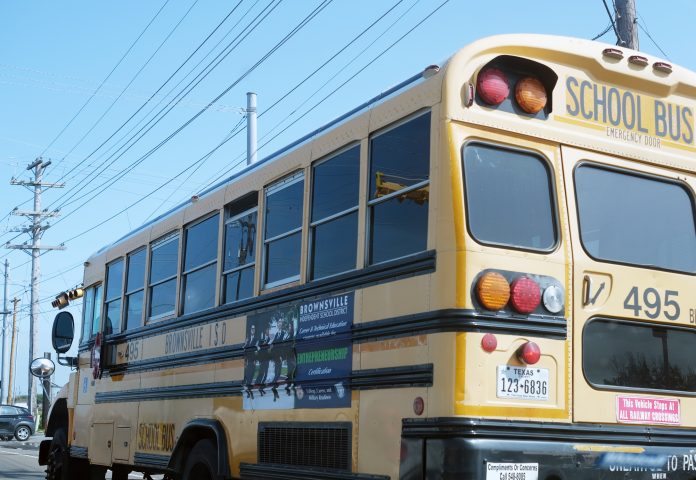
Trustees with the Brownsville school district on Tuesday approved a resolution taking aim at South Texas ISD’s funding structure after that district dug in its heels against a legislative push to eliminate its taxing authority, which began last week.
Brownsville trustees voted to withdraw from STISD’s taxing district and to support legislation updating funding laws pertaining to the district, joining a group of critics that claim the district has strayed from its original mission and unfairly competes with original school systems.
South Texas ISD, meanwhile, is arming faculty and staff with talking points justifying its funding structure that it says employees can share with legislators to aid its resistance to change.
McAllen, Edinburg, Point Isabel and Lyford school districts have approved similar resolutions to Brownsville, and State Rep. Surgio Munoz, Jr., D-Palmview, said he intends to introduce legislation responding to those concerns as soon as next week.
Other Rio Grande Valley legislators have been more ambivalent on the issue, though most of them say it’s one worth discussing seriously.
South Texas ISD currently taxes residents in Cameron, Hidalgo and Willacy counties in a system that critics say charges taxpayers unfairly and pushes an uneven amount of money toward the district.
STISD argues it provides a valuable and reasonable service to the community, rebuffing claims of inequity.
Brownsville ISD’s resolution says South Texas ISD collects $3.13 million from taxpayers and enrolls less than 4% of special education students, whom it was originally meant to serve when it was created in the 1960s.
Brownsville says it receives a little over $7,000 per student in weighted average daily enrollment while STISD receives over $12,000 per student. The district enrolls 807 students in BISD’s parameters.
Why aim a blade at the district’s purse strings?
“Because all children deserve the same, no matter what school they attend. They’re all part of our country and they’re all being educated to move this country forward,” Brownsville Trustee Minerva M. Peña said Tuesday.
Critics of South Texas ISD argue that the district is, in fact, so well funded that it can operate without being transparent because it has enough money to pay for things in cash and can operate without the public’s input on things like bonds.
South Texas ISD denied last week an appeal at transparency when the district declined to share an internal memo detailing its response to legislative efforts it says could impact its very existence.
Spokeswoman Amanda Odom directed The Monitor to submit an open records request for that document, but copies of it obtained by the newspaper indicate the district intends to fight back hard against mounting calls for change.
“We have prepared data to share with our legislators, media, our district community, and the larger RGV with the truth about who we are, what we do, and how we are funded in relation to others within the region,” the letter, penned by STISD Superintendent Marco Antonio Lara, reads. “We will also be sharing “talking points” with you for your personal knowledge and so that if you choose, you too can share with our legislators to let them know the importance of continuing to fund our district in the way it has been for over 50 years.”
Lara wrote that he intends to meet with Valley legislators personally to plead the district’s case. The letter argues that critics of the district’s funding structure are deceiving the public and urged the community to unite against the reform push.
“The information presented by these groups to legislators and through the media is misleading, and only presents the part of the story that benefits their cause,” he wrote. “We will not allow them to harm the opportunity for STISD to exist as a choice and an exemplary alternative educational setting for the residents of the RGV.”
It remains to be seen what a viable STISD funding reform bill would look like.
Munoz has said that such a bill cannot leave the district “high and dry” in terms of funding, and legislators on the fence have indicated that they too are concerned over reform hurting the district’s students.




